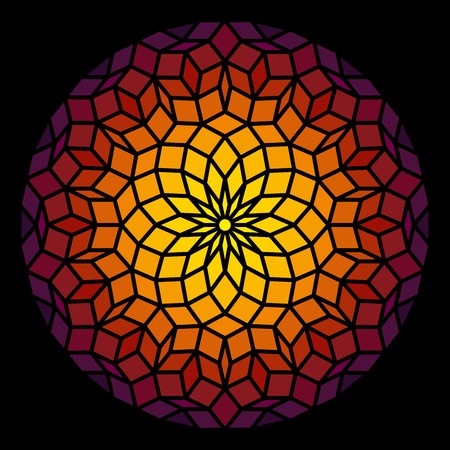In the previous article, we examined seven-note scales, arguably the most “familiar” sounds in tonal music. Since 7 doesn’t divide evenly into 12, these scales can’t be symmetrical, meaning they don’t repeat an interval sequence. (except at the octave, of course) Today, we will examine scales that are formed using interval patterns, with numbers of tones other than 7.
Keeping it Real
In the interest of simplification and reduction, we will once again establish some ground rules, or boundaries to our catalog:
- We will be using intervals, or numbers of half-steps, rather than scale degree names, for mathematical simplicity. Once done, we can convert to a musical system of tones and intervals.
- As before, we will exclude configurations that contain two or more sequential half-steps. While perfectly fine to play linearly, the middle tone of the half-step will tend to function as a passing tone. Used vertically, our ear will tend to “eliminate” this tone from the harmony. Remember, we are talking about a tonal center, not a linear form. When creating lines an patterns from these modes, we can then add the passing tones to our heart’s content. It makes sense to separate them from our “vertical” thinking, however. There are many of these forms, and some of them are quite lovely, but our definition of “tonal center” puts them in a different category.
- Intervals greater than a 3, or a minor third, will create more of an arpeggiation, pentatonic, or chord. To form a scale, we will use 1, 2 and 3. (we will consider pentatonics later. For this exercise, we will think of chords and pentatonic scales as subsets of larger collections.)
- Any scale that can be turned into another mode simply by adding a tone will be excluded. This will avoid modes that arguably are not unique as a tonal center. Again, patterns that “skip” tones in a mode, such as arpeggiations, are very important, but they are best described as ways of playing a scale rather than scales unto themselves. Think of the mode as the “alphabet” and the patterns as words; every time we rearrange the letters, it doesn’t create a new alphabet.
Making Arrangements
When organizing these sets of intervals, I used a system to avoid patterns that are redundant or that don’t fall within our boundaries. From the top down, here are the layers:
- “Groups” are the selection of intervals forming a scale, regardless of order. These can be found by collecting intervals in ascending order. Using orders other than ascending creates configurations, as below. To avoid redundancy, groups start with smallest numbers (1) and go upward in ascending order. Groups, by nature, need to add up to 12.
- “Configurations” are specific orders of intervals, regardless of rotation. Typically, we can start with the smallest number, since changing this will create modes.
- “Exclusions” are conditions that limit the configurations, such as two half-steps in a row. These are chosen based on musical principles, such as redundancy, (subset of another scale) linearity (passing tones)
- “Modes” (or Rotations) are specific starting points of a configuration. Some configurations have as many modes as they do intervals. Others, like a whole-tone or chromatic scale, have only one mode. Symmetrical scales usually have fewer modes, and are sometimes called modes of limited transposition for this reason.
If we were to continue this list, the next layers of arrangement would include subsets of these modes:
- Reduced forms that are missing tones, such as pentatonic scales.
- Forms with chromatic passing tones, such as “Bebop” scales.
- Arpeggiations and interval patterns within the tonalities.
- Chord forms and harmony derived from the mode.
Needless to say these things are necessary for musical value, but they are all variations and embellishments on existing tonalities, rather than “new” material.
What’s Left?
When following these guidelines, a surprising thing happens: there are really only 4 symmetrical scales. All the others are subsets of some other mode, or contain “built-in” chromatic passing tones, which we can add later.
- The Chromatic Scale: not a tonality, since it contains nothing but half-steps. (Yes, it does contain all other tonal centers, but without any pattern, this is not really very helpful!)
- Whole-tone Scale: Completely symmetrical, there is only one mode. In fact, there are only two distinct whole-tone “key signatures.”
- Augmented Scales: Alternating half-steps and minor thirds, there are two modes: half-step first and minor third first. There are only four distinct “key signatures” due to the symmetry of the scale.
- Diminished scales: Alternating half and whole-steps. Again, there are two modes, starting with either half or whole steps. Due to repetition of the pattern every minor third, there are only three distinct diminished scale “key signatures.”
In an effort to keep this article brief and as uncluttered as possible, I have outlined the search process in a PDF you can view below. In math class, you were always expected to “show your work:”
